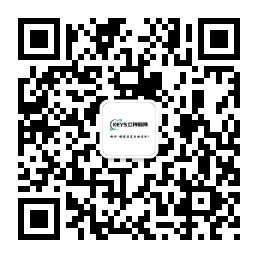CCC Certification, also known as 3C Certification, stands for "China Compulsory Certification" (CCC). It is a product conformity assessment system implemented by the Chinese government to protect consumer safety and national security, strengthen quality management, and ensure compliance with legal and regulatory requirements. The English name for 3C Certification is China Compulsory Certification (CCC).
To fulfill China's commitment upon joining the WTO and to align with international technical evaluation mechanisms, the Chinese government established the CCC system based on four unification principles.
CCC Certification partially or completely replaces the following:
· The safety and quality licensing system for imported and exported goods (CCIB)
· The Great Wall Safety Certification System
· The Network Access Licensing System
· The Sales Licensing System
· The Industrial Product Production Licensing System
The State Administration for Market Regulation (SAMR) officially released the CCC system on December 3, 2001. The first batch of 19 categories with 132 types of products was subject to mandatory certification from May 1, 2002. However, enforcement supervision was later postponed to August 1, 2002.
1. Electrical wires and cables
2. Circuit switches, protective, or connecting electrical devices
3. Low-voltage electrical equipment
4. Small-power motors
5. Power tools
6. Welding machines
7. Household and similar electrical appliances
8. Audio and video equipment (excluding professional broadcasting and automotive audio systems)
9. Information technology equipment
10. Lighting equipment (excluding lighting equipment operating below 36V) – Lamps, Ballasts
11. Telecommunication terminal equipment
12. Motor vehicles and safety accessories
13. Motor vehicle tires
14. Safety glass
15. Agricultural machinery products
16. Latex products (rubber condoms)
17. Medical devices
18. Fire protection products (fire alarm systems)
19. Security and alarm products (intrusion detectors)
· Wireless LAN products
1. Solvent-based wood coatings (for indoor decoration, including nitrocellulose, alkyd, and polyurethane coatings)
2. Porcelain tiles (for building decoration with a water absorption rate ≤0.5%)
3. Concrete antifreeze agents
1. Magnetic switch intrusion detectors
2. Vibration intrusion detectors
3. Indoor passive glass break detectors
4. Burglar alarm control panels
5. Automobile anti-theft alarm systems
6. Safes and security cabinets
1. Children’s bicycles
2. Electronic toys
3. Plastic toys
4. Metal toys
5. Projectile toys
6. Doll toys
1. Motor vehicle lighting products
o Headlamps, Turn signals
o Front/Rear position lamps, Brake lamps, Marker lamps
o Fog lamps, Reverse lamps, Parking lamps, Side marker lamps, Rear license plate illumination devices
o Motorcycle license plate lamps, Position lamps
2. Motor vehicle retro-reflectors
3. Automobile event data recorders
4. Vehicle reflective markings
5. Automotive brake hoses
6. Motor vehicle rearview mirrors
7. Motor vehicle horns
8. Automobile fuel tanks
9. Car door locks and hinges
10. Interior materials
11. Seats
12. Headrests
It is important to note that the CCC mark is not a quality mark but a basic safety certification. While some safety indicators confirm product compliance, they do not guarantee superior product performance. Therefore, when purchasing products, consumers should consider other product specifications beyond the CCC mark.
1. Mandatory Product Certification Application Form
2. Copy of Business License or Registration Certificate (Required for first-time applications or changes)
3. Organizational structure diagram of the manufacturing plant (Required for first-time applications or changes)
4. Process flowchart of the product under certification (Required for first-time applications or changes)
5. List of key inspection instruments used for routine testing (Required for first-time applications or changes)
6. General assembly drawings and electrical schematics
7. Chinese nameplates and warning labels for the certified product (two copies)
8. Chinese user manual for the certified product
9. Explanation of differences between models within the same application unit
10. Appearance photos of each model within the same application unit (two copies)
11. Other required documents (e.g., CB test reports, if available)
1. Mandatory Product Certification Application Form
2. General assembly drawings and electrical schematics
3. Chinese nameplates and warning labels for the certified product (two copies)
4. Chinese user manual for the certified product
5. Explanation of differences between models within the same application unit
6. Appearance photos of each model within the same application unit (two copies)
7. Other required documents (e.g., CB test reports, if available)
